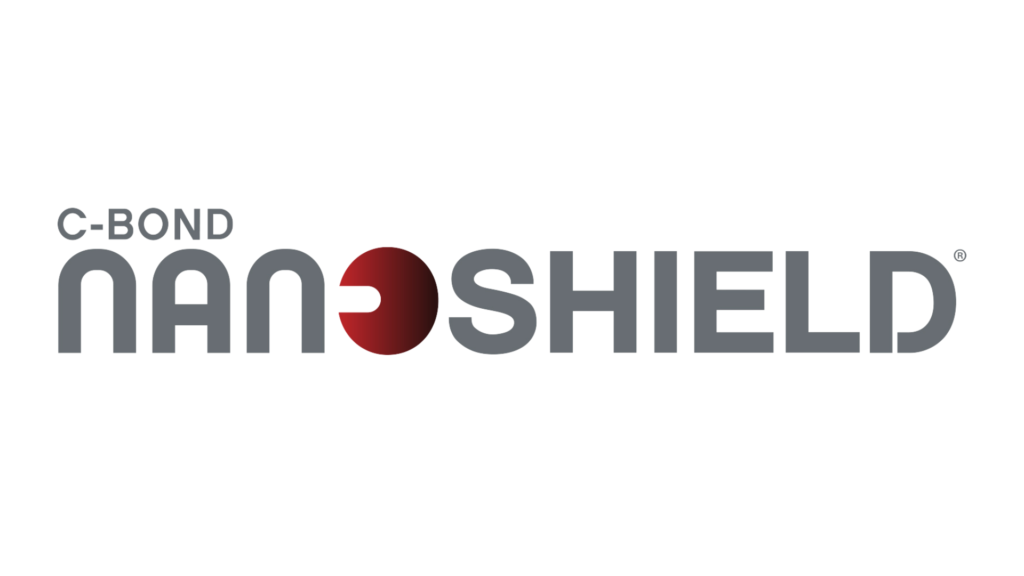
FAQ & Video Resources
Below are a list of frequently asked questions and video explainations. Please contact us for more information
What is C-Bond nanoShield®?
- C-Bond nanoShield® is a glass treatment designed to significantly increase the strength, durability, and structural integrity of glass while also including a water-repellent to improve driver visibility and reaction time during wet weather conditions.
Where can nanoShield be used?
- nanoShield is specifically intended to increase glass strength on automotive and truck windshields.
Why should I use nanoShield?
- nanoShield helps your windshield resist chipping and cracking due to impact from road debris in addition to damage caused by vibration and flexing of the vehicle body against the mounted edges of the windshield.
How does nanoShield work?
- nanoShield is a ‘smart solution’ engineered to identify the microscopic flaws and defects that are found throughout every glass surface, which weaken the glass structure and initiate failure.
- nanoShield’s proprietary technology then penetrates the glass and covalently bonds with and repairs the microscopic surface imperfections, dramatically increasing the strength of the glass.
What results should I expect from using nanoShield on my windshield?
- nanoShield has been shown to increase glass strength up to 80% when compared to untreated glass, reducing the incidence of windshield chipping and cracking from 40% to 82%, and reducing repair and replacements costs up to 83%.
How is nanoShield applied?
- nanoShield is applied by first thoroughly cleaning a new OR existing windshield and then treating one half of the exterior of the clean and dry windshield surface by spraying it with nanoShield.
- After approximately 30 seconds, a squeegee is used to remove the excess liquid from the glass before using the same steps to treat the other half of the exterior of the windshield.
- Best results are obtained when treatment is applied in a covered area out of direct sunlight, between 50°F and 90°F (10°C and 32°C).
What should I do if nanoShield leaves a slight hazing or streaking on the windshield?
- This is an indication that either too much nanoShield was applied or not squeegeed off the windshield before it was allowed to dry.
- Use a clean, dry microfiber cloth to remove any remaining residue, or if needed simply moisten the clean microfiber cloth first without soaking the cloth and wipe off any remaining haze, streaking or residue.
- The glass surface can then be buffed by hand with a clean, dry microfiber cloth.
- This will not diminish the performance of the nanoShield that has already bonded with the micro-fractures in the glass.
What if it is very hot or cold when I want to apply nanoShield?
- If the vehicle has been sitting outside on a hot day and the windshield is too hot (above 90°F / 32°C), run the vehicle’s defroster with the A/C turned on for 10 – 15 minutes to cool off the windshield before applying nanoShield.
- If the windshield is below 50°F (10°C), run the defroster on heat for 10 – 15 minutes to warm the windshield before applying the treatment.
How long after applying nanoShield can I drive my vehicle?
- You can drive the vehicle immediately after application is completed, although it is recommended not to drive in excessive rain conditions for 24 hours.
- If that is unavoidable, we recommend running the defroster on heat for 15 – 20 minutes following application to accelerate the curing process and obtain the most benefit from nanoShield prior to driving.
Does nanoShield stain or damage vehicle paint, chrome, rubber, plastic, fabric, or other possibly “over-sprayed” surfaces?
- nanoShield only reacts with glass so it will not stain or damage paint, rubber, plastic, chrome, or other vehicle surfaces.
- Simply wipe it off with a clean, dry rag.
- If it becomes stubborn to remove, moisten a clean rag and wipe it off.
- If needed, buff surface with a clean, dry microfiber cloth.
How do I know nanoShield will work?
- nanoShield development was completed in cooperation with Rice University’s Chemical & Mechanical Engineering Departments, and the product has been tested and validated by independent, third-party glass industry laboratories.
- Testing was executed in accordance with government, law enforcement, and industry standards including American National Standards Institute (ANSI), American Society for Testing and Materials (ASTM), SAE International (formerly the Society of Automotive Engineers), General Services Administration (GSA), National Institute of Justice (NIJ), Consumer Product Safety Commission (CPSC), and Underwriters Laboratories (UL).
I already use a water-repellent product. Why do I need nanoShield?
- While nanoShield contains a water-repellent component, its primary purpose is to strengthen windshields and other automotive glass to reducing costs associated with chipping, cracking, and replacement. T
- here is no substantive data that suggests a water-repellent product can provide the same kind of glass protection. That said, you can still safely add nanoShield on top of your existing water-repellent product provided the previously applied product is completely dry beforehand.
- If you apply nanoShield first, we recommend waiting 24 hours or more before applying a hydrophobic (water-repellent) product on top of it.
- nanoShield becomes a permanent part of the glass once it has cured, or when applied after a water-repellent is dried, making it a “stackable” product.
Why do I need to re-apply nanoShield if it becomes a permanent part of the glass?
- During normal driving, a windshield will continue to be impacted by road debris such as sand, dirt, stones, etc., all of which will continue to generate new micro-imperfections in the glass surface.
- The body of the vehicle will also continue to vibrate and flex against the edges of the mounted glass, further aggravating and growing those imperfections.
- Periodic re-application with nanoShield will help treat those new imperfections before they can reduce the overall strength of the glass leading to chips and cracks.
- For vehicles being driven up to 50,000 miles per year we recommend re-application once per year to maintain adequate protection. For vehicles experiencing higher mileage we recommend re-application every six months.
Does nanoShield pose any kind of health risk?
- nanoShield is designed and engineered to ensure it does not present any known health risk.
How is nanoShield stored?
- Given that nanoShield is a water-based technology it must be stored above freezing, preferably above 50°F (10°C) but less than 120°F (49°C) if possible. It cannot be allowed to freeze. Proper storage will protect the product for well over a year.
Is nanoShield patented?
- Yes, nanoShield is protected by 22 patents spanning core and strategic nanotechnology applications and processes.
Who owns nanoShield?
- CB Nanoshield, headquartered in Houston, Texas, is a nanotechnology company and sole owner, developer, and manufacturer of the patented C-Bond nanoShield® technology. The company uses proprietary nanotechnology to enhance properties of strength, functionality, and sustainability of glass.
Where was this technology developed?
- C-Bond nanoShield’s nanotechnology was jointly developed with Rice University in Houston, Texas, a world leader in nanotechnology, home to the Smalley Institute of Nanoscale Science & Technology and recipient of the Nobel Prize for the discovery of nanoscale materials called fullerenes.
Where is nanoShield manufactured?
- nanoShield is manufactured in an 8,200+ square foot facility in Houston, Texas.
Application Instructions
Tools Required:
- 2 Ounces of nanoShield Solution in a spray bottle per vehicle
- Commercial “Streak/Residue-Free” Glass Cleaner or Isopropyl Alcohol (IPA)
- Squeegee
- Two Microfiber Cloths
Application Temperature:
- The windshield temperature is important for correct application. The application is best performed in a climate controlled (dry), covered area ranging from 50° to 90°F / 10° to 32°C.
- On a hot day run the defroster in Air Conditioning mode for 10 minutes prior to application to cool the surface. On a cold day run the defroster in Heat Mode for 10 minutes prior to application to warm the surface.
Procedure:
- Before you begin, inspect the windshield for any existing damage and document accordingly. If a fleet application, record the Year, Make, Model & VIN and including a picture is advised.
- Prepare and clean the windshield before application. Follow standard glass cleaning methods using commercial streak/residue-free glass cleaners or IPA.
- Lift the wiper blades off the windshield surface.
- Spray half the windshield surface with your cleaning solution, use a microfiber towel to remove the dirt and dry the windshield surface. Repeat on the other half of the windshield.
- Remove any remaining cleaning solution from the windshield edges with the microfiber cloth.
- Shake the C-Bond nanoShield bottle well to mix the solution.
- Uniformly spray half the windshield surface with about one ounce of the C-Bond nanoShield solution starting at the top to the bottom and from the center to the edge.
- After waiting 15 to 30 seconds, use a dry squeegee to remove the solution from the glass surface starting at the top center and pulling towards you to the edge. Wipe the squeegee dry after each pull while overlapping the next pull slightly over the previous. Repeat until you reach the bottom. Remove any residual solution from the windshield edges or any overspray with a microfiber cloth. Overspray will not harm or adhere to paint or other materials.
- Repeat on the other half of the windshield.
- Inspect the windshield for any cloudy haze that may occur. This is a result of incomplete removal of the solution or accelerated drying resulting from application on a hot windshield.
- In the event of haze, remove by wiping the area with a clean, dry microfiber cloth. If the haze is not removed, dampen the microfiber cloth with water and wipe the affected area then wipe with another dry microfiber cloth.
- After installation, in the event it is raining or cold outside the facility, run the defroster in heat mode for 10 minutes to drive as much of the residual moisture off the windshield as possible prior to moving the vehicle outdoors to facilitate curing. It is best not to allow the windshield to get wet for up to 24 hours following application.
- Record date of application and apply windshield sticker. If a fleet application, record Year, Make, Model, VIN and date of application.
- Reapply nanoShield once per year or every 50,000 miles to maintain protection due to normal vehicle use.

Official Distributor of


